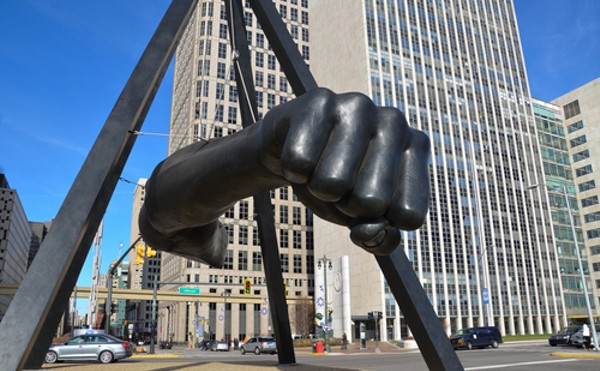The somewhat mild-mannered 70-year-old Hermon Weems put the "delic" in Funkadelic. Truly. Dig this: The Cass Tech alumnus — born Herman Weinis — says he turned the young George Clinton onto the wonders of LSD back in the mid-'60s. In one small moment Weems freed Clinton's mind and altered soul music as we know it.
"I turned him into a beatnik!" Weems cracks.
Most know Weems as the eye-popping sign and box painter at Peoples Records. But that's nothin' — Weem's story could fill a tome on the Detroit music scene at its creative apexes in the '50s, '60s and '70s.
Coming of age in the fertile 1950s Detroit jazz scene, Weems befriended Yusef Lateef, who mentored the aspiring drummer and took him to Elvin Jones' house to learn a thing or two. He learned. Weems also went on to book acts and hand-paint signs at legendary Detroit jazz club the Minor Key, where seemingly everybody played — Monk, Ornette, Art Blakey, John and Alice Coltrane, Miles, Mingus and other greats.
Oh, yeah ... on top of his lucrative sign-painting gig, Weems wrote Northern soul semi-classics for the legendary Detroit labels Ric-Tic and Golden World as well as artists J.J. Barnes, Dee Edwards, the Detroit Emeralds, the Fantastic Four and Al Kent. Weems also played percussion on many of the Ric-Tic and Golden World releases.
And practically anyone reading this knows two of Weem's greatest art achievements: He painted the cover for the Temptations' 1970 tripped-out soul classic Psychedelic Shack and he created the infamous Funkadelic logo. No shit.
These days Weems lives in a modest west side Detroit home with a couple of friends. He still paints signs around Detroit and is currently designing a logo for Stones Throw retro Northern soul artist Mayer Hawthorne (an alter ego of DJ Haircut).





